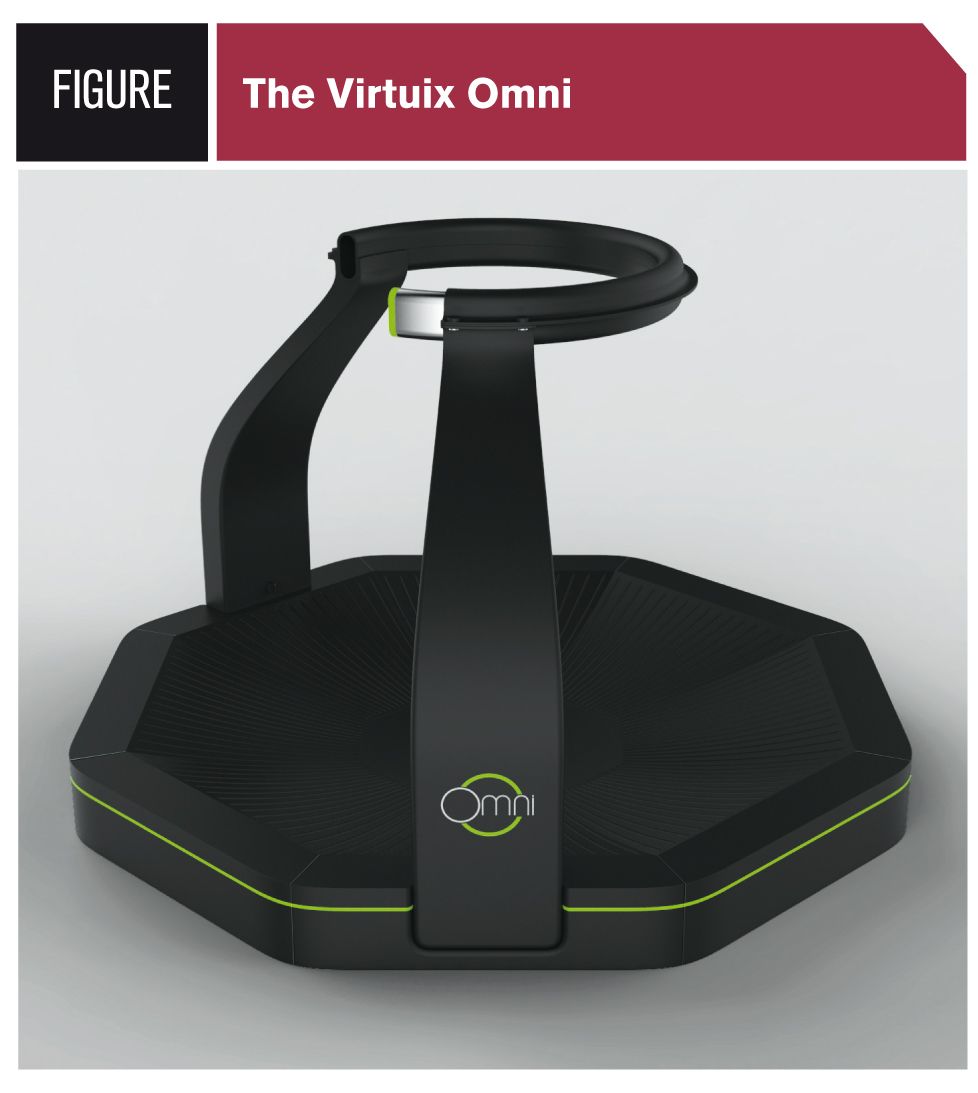Virtual reality: The reality of 2014
Real-feel devices and virtual reality headsets, both in the works and on the market, have applications for physicians and their patients.


Dr. Levine is Clinical Fellow, Reproductive Endocrinology & Infertility, Ronald O. Perelman and Claudia Cohen Center for Reproductive Medicine, Weill Cornell Medical College, New York.
Dr. Goldschlag is Assistant Professor of Clinical Obstetrics and Gynecology and Assistant Professor of Clinical Reproductive Medicine, Ronald O. Perelman and Claudia Cohen Center for Reproductive Medicine, Weill Cornell Medical College, New York.
This is proving to be a technologically exciting year. On March 25, Facebook announced that it is acquiring Oculus VR, Inc., the leader in immersive virtual reality (VR) technology, for approximately $2 billion.1 The founder of Oculus VR, 21-year-old Palmer Luckey, who proudly states that he has one of, if not the, largest personal collection of head-mounted displays in the world, said in an interview last summer, “I started to collect [headsets] and bought a lot of them from government auctions and industry equipment liquidation sites and all kind of fun places. I took them apart, looked at how they worked, tried to learn what do they do right … what do they do wrong. … I started to try and modify some of them and make them into something I would actually want to use.”2
Because of his passion for wearable displays, he became an active participant in Meant To Be Seen (MTBS) 3D’s discussion forums. Through the power of traditional social media (Facebook, Twitter, Instagram) and his connections through MTBS’ online forums, Luckey developed the idea of creating a head-mounted display that was “both more effective than what is currently on the market, and inexpensive for gamers.”2,3
So why did Facebook, a social media behemoth, buy a video game headset company? The answer lies in their press release: “While the applications for virtual reality technology beyond gaming are in their nascent stages, several industries are already experimenting with the technology, and Facebook plans to extend Oculus’ existing advantage in gaming to new verticals, including communications, media and entertainment, education and other areas. Given these broad potential applications, virtual reality technology is a strong candidate to emerge as the next social and communications platform.”1 Oculus VR is not only going to become another platform for using Facebook and connecting with social media contacts, but also will enable novel ways to interact virtually.
During the last 6 months I have been using Google Glass whenever possible. Although I believe that Glass provides a first-person “feel” to connected viewers, it does not immerse the observer in surgery. Like an intuitive DaVinci robot console that blocks ambient light and restricts a surgeon’s field of view to only what is projected in the binoculars, Oculus VR’s headset may allow for the first “real-feel” user experience when worn by a virtual surgical observer. In fact, it is also foreseeable that if surgeons started operating with Oculus VR headsets, the need for surgical assistants could be obviated, because head motions could direct the camera if connected to a robotic-assisted trocar.
Beyond VR projection headsets, software and hardware developers are working tirelessly on a number of real-feel devices. For example, the recently announced Virtuix Omni is an omnidirectional treadmill that uses a slick surface that the user stands and walks on to simulate the motion of walking.4 The system requires special shoes that reduce friction when walking, while the user is fully enclosed within a ring that works with a safety harness to absorb the player’s weight.4,5

Although the impetus for this device’s creation is advanced video gaming, the Virtuix Omni could quite possibly be the future of home physical therapy. It could reduce the need for costly rehabilitation centers by allowing for high-quality neurological and musculoskeletal rehabilitation in the patient’s home. It is easy to imagine that a physical therapist could come to a patient’s house, help secure the patient into the harness, and then have the patient follow a number of video game-like scenarios as part of his or her prescribed treatment plan.
Another extremely promising virtual device slotted to be delivered later this year is called ARAIG (As Real As It Gets). Although still early in development-the device’s manufacturer is still raising capital through Kickstarter and other avenues-this project is exciting. As described on its Kickstarter page, ARAIG is a “multi-sensory feedback suit to experience the next level of gaming … [f]inally you get to feel what you’ve only been able to see.”6 The manufacturers explain that by using a high-quality multi-dimensional wearable suit, users can feel sensations such as rain on their shoulders, the rumble of a tank, and the concussion of sound and debris.
Because it is an immersive, wearable technology, ARAIG may improve the quality of robotic surgery by providing tactile feedback to surgeons. It could be used in other clinical settings as well. For example, by using sound and sensations, a version of ARAIG could be used for the hard-of-hearing, as a new educational paradigm for those with learning disabilities, or in combination with something such as the Omni to allow for virtual walking/exploration as part of a rehabilitation program.
2014 is shaping up to be an exciting year in VR technology. These 3 technologies are all scheduled to be released during the next few months and are estimated to cost less than $1000 each. This means that real-feel VR is no longer a thing of the future, but a technology that is going to be available in both our professional and personal technological interactions. We can’t wait to see what is in store for the second half of 2014.
References
1. Facebook. Facebook to acquire oculus. http://newsroom.fb.com/news/2014/03/facebook-to-acquire-oculus/. Accessed April 21, 2014.
2. Eurogamer.net. Happy go Luckey. Meet the 20-year-old creator of Oculus Rift. http://www.eurogamer.net/articles/2013-07-11-happy-go-luckey-meet-the-20-year-old-creator-of-oculus-rift. Accessed April 21, 2014.
3. Meant To Be Seen. Oculus “Rift”: An open-source HMD for Kickstarter. http://www.mtbs3d.com/phpbb/viewtopic.php?f=140&t=14777. Accessed April 21, 2014.
4. Miller P. The Verge. Testing the Virtuix Omni: A walk on the virtual side. http://www.theverge.com/2013/6/11/4419832/virtuix-omni-vr-hands-on-demo. Accessed April 21, 2014.
5. Tweedie S. Business Insider. This virtual reality treadmill could be the ‘holy grail’ of video game controllers. http://www.businessinsider.com/virtuix-omni-kickstarter-launch-2013-6. Accessed April 21, 2014.
6. Kickstarter. ARAIG-As real as it gets. https://www.kickstarter.com/projects/141790329/araig-as-real-as-it-gets. Accessed April 21, 2014.
